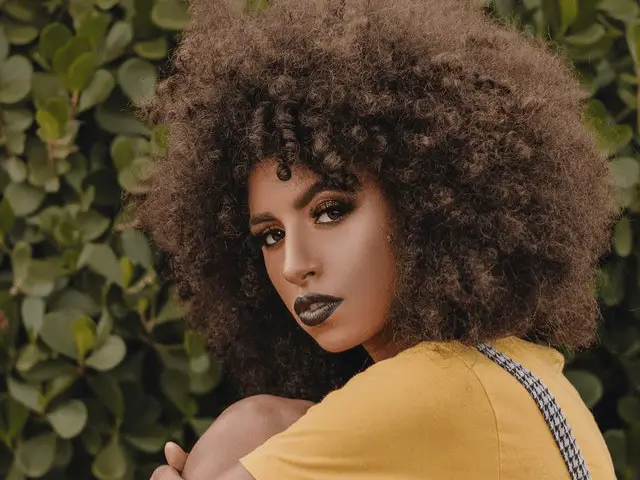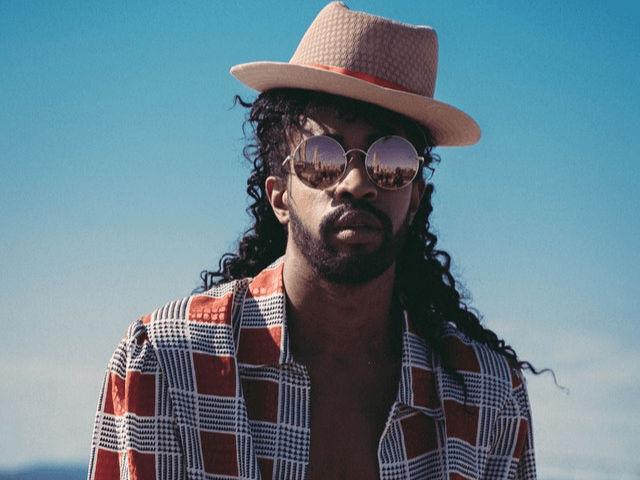Your afro will always raise attention, so why not have a healthy afro puff that turns heads because of its sheen?
Yes, so why not?
It's easier to grow an afro today because there are tons of hair products for textured hair, and expert advice, than in the 60s when the Jackson 5, Miriam Makeba, Nina Simone, and other artists who had made the afro vibe a global phenomenon.
Well, you've done the basics for healthy hair; you're eating a balanced diet and taking enough water.
Now, it's time to learn how to grow an afro as fast as possible for both men and women.
So here are the best tips to do that:
Page Contents
Tips On How To Grow An Afro Fast
If you're patient, you'll have an afro like the one flaunted by Solange Knowles, Angela Davis, and Colin Kaepernick, and it'll be worth every moment you’ve spent with an afro pick.
If you want a distinct afro hairstyle, I hope you’ve already selected one and your afro is conforming to it as it grows.
Let’s now focus on afro length. To see your afro grow within months, you need to:
Moisturize
Hair breakage reduces your hair’s length, so when you moisturize, the strands become healthy and flexible, and they don’t break easily when you comb your afro.
You will come across many suggestions, in articles on how to grow out an afro, telling you how often you should wash your hair. Ideally, wash your hair about once a week to remove build-up without reducing its natural moisture.
As you shampoo, focus on the scalp instead of the hair as doing the opposite increases tangles and causes breakage. In contrast, the hair conditioner goes on the hair instead of the scalp to reduce hair tangles and make it easy to comb.
Change Your Hair Tools
When looking at how to grow an afro, we should not forget the importance of hair care techniques and tools.
As your afro grows longer and thicker, brush it with a wide-toothed comb and use a pick to detangle it instead of a tight-toothed comb.
Why? A tight-toothed comb will not penetrate your afro, and if it reaches even an inch into the puff, it will be one of the most painful combing sessions you’ve ever had.
Fingers also detangle your hair better than a comb, and you can work through the hair more carefully than when you run a comb through it.
Invest In a Night-time Head Wrap

To avoid losing hair moisture at night, wrap your hair in a headscarf (for longer hair) or a durag (for shorter hair).
The best materials for headscarves are silk and satin because they trap the moisture inside, and they won’t leave pieces of thread in your afro.
Additionally, silk and satin hair bands are the best for holding your hair, especially in a black man bun, if you need to hold it before tying a headscarf over your long afro.
Moreover, when you wrap your hair before you sleep, you keep it in one place and reduce tangles that lead to breakage from combing it for long the following morning.
For ladies, if you’re not keen on using a headscarf or a satin bonnet, at least start using a satin pillowcase to reduce the loss of hair moisture at night.
Know Your Hair Type
Hair responds to products and hair care methods differently, so when you know your hair type, you’ll make better decisions when treating or combing it.
Note that African hair is less hydrated than Asian or Caucasian hair, and it breaks faster even though it has more sebum.
How can you describe your hair?
Strong hair has high density, it resists breakage, it is long and has no tangles, it has healthy hair follicles, and you can finger-comb it.
On the other hand, weak hair has uneven length because of frequent breakage, it’s rough, it has low hair density, and it’s tangled.
Further, hair types range from 1 to 4, with each group consisting of three hair textures labeled from a to c.
Type 1 consists of three sub-types of straight hair characterized by their curl resistance while hair type 2 has three sub-types of wavy hair that are mainly resistant to curling.
Type 3 groups curly tresses with an S pattern, and type 4 defines coily hair with Z-shaped curls. So, now, where can we group your hair?
You’ll have better expectations for afro length when you know the type of hair you have.
Grow An Afro From An Even Cut

The hairstyle you had might have tampered with the length of your hair, and you might have uneven patches you’re not aware exist. For that reason, trim it to clear split ends and start with a length of about two inches instead of five inches with severe hair breakage.
Stay Away From Hairdryers
Let your hair dry naturally to reduce dryness and hair breakage because the heat from a hairdryer leaves you with brittle strands of hair. After washing it, plait it and wrap it in your silk head scarf or wrap it in a towel and pat dry.
Occasionally, use a hairdryer, but set it to the lowest heat and use it about 15 cm from the hair and you’ll get better results than drying your hair naturally.
Wear Protective Hairstyles
Extreme weather conditions can break your hair or reduce its moisture content, and a protective hairstyle lets you cover your hair, maintain its natural moisture and avoid hairdryers and straighteners.
For instance, when you have braids, cornrows, or a wig, you can wear a hat over your hair in winter, and when you have braids or cornrows in summer, you protect your hair from tangles that lead to breakage.
Nonetheless, don’t forget to take care of your natural hair because you have a protective style over it. Moisturize it regularly so that you’ll have long, healthy hair when you undo the protective style.
Frequently Asked Questions On How To Grow Out An Afro
Is It Hard To Keep And Maintain An Afro?
Most people use chemical relaxers because of the assumption that textured hair is unmanageable. On the contrary, an afro is easy to maintain with regular trims to increase length and reduce split ends.
The wash day routine also makes it sound like you’ll need to schedule a day to take care of your hair, yet it’s a few steps that you can simplify further when you have products that combine these steps.
To have a manageable afro, you’ll pre-poo (treat with a deep conditioner like an oil), shampoo, apply a post-shampoo conditioner to detangle your hair, moisturize with oils, air dry it and style your afro.
How Long Does It Take To Grow An Afro?
In a month, your afro grows about half an inch, and factors like genetics and lifestyle control this growth.
Further, the length of hair you have when you begin this hairstyle will also determine your anticipation because if you start with a baldhead, you’ll be more concerned about hair growth than someone who has started with a 12-inch length.
Hair damage can slow down new growth, so if you’d like to see more length, find ways to reduce tangles and breakage, such as moisturizing and conditioning your curls. It is ideal for black men curly hair.
Since afro hair is more vulnerable to tangles, it may not grow as fast as the suggested half an inch every month. Hence, you’ll see considerable growth in about three to six months.
On the other hand, if you trimmed your tresses to grow them into an afro, you already have the starting length, so all you need is hair density for a signature afro puff.
Can You Turn Straight Hair Into An Afro?
Yes, and the first step is trimming your straight hair into manageable length. Next, get a perm and use small curlers to add natural curls to your straight tresses. Let the hair curls settle for about two days, then comb them out with your fingers or an afro pick.
Conclusion
If you’re growing an afro after your big chop, well, you’ve already rid yourself of the damage caused by heat and chemical relaxers.
Now, your priority is managing your afro without tangles and hair breakage by moisturizing and conditioning it regularly.
If weather elements are causing tangles and dry hair, wear a wig or plait your hair. My last statement may not be so popular with men, but it helps!
What are your thoughts?




